Abstract
One hundred and twenty-five Shigella flexneri strains, isolated during January-December 1984, at the Dhaka treatment centre of the International Centre for Diarrhoeal Disease Research, Bangladesh, were serotyped using absorbed rabbit antisera specific for all type- and group-factor antigens, as well as a group of ten mouse and rat monoclonal antibodies. Electropherotypes of the plasmid deoxyribonucleic acid (DNA) were also determined. S. flexneri 2a was the predominant serotype followed by 3b, 1a, and 2b. The recently described E1037 antigen was also found in three strains of S. flexneri serotype 6. Electropherotyping of the plasmid DNA showed that three plasmids of approximately 140, 2.7, and 2 megadalton (MDa) were present, respectively, in 97, 97 and 94% of the 125 strains. Additional plasmids of various other sizes were also present in different serotypes except in serotype 2a. The additional plasmids again appeared to be specific for that particular serotype. For example, all 12 strains of S. flexneri 2b harboured an additional plasmid of approximately 1 MDa. Thus, electropherotyping of plasmid DNA of different serotypes of S. flexneri might be useful to differentiate S. flexneri from other species of Shigella and in identifying different serotypes of S. flexneri. Therefore, the common plasmids, plus the additional plasmids, could be used to identify epidemic, as well as sporadic, subclones of S. flexneri strains.
Full text
PDF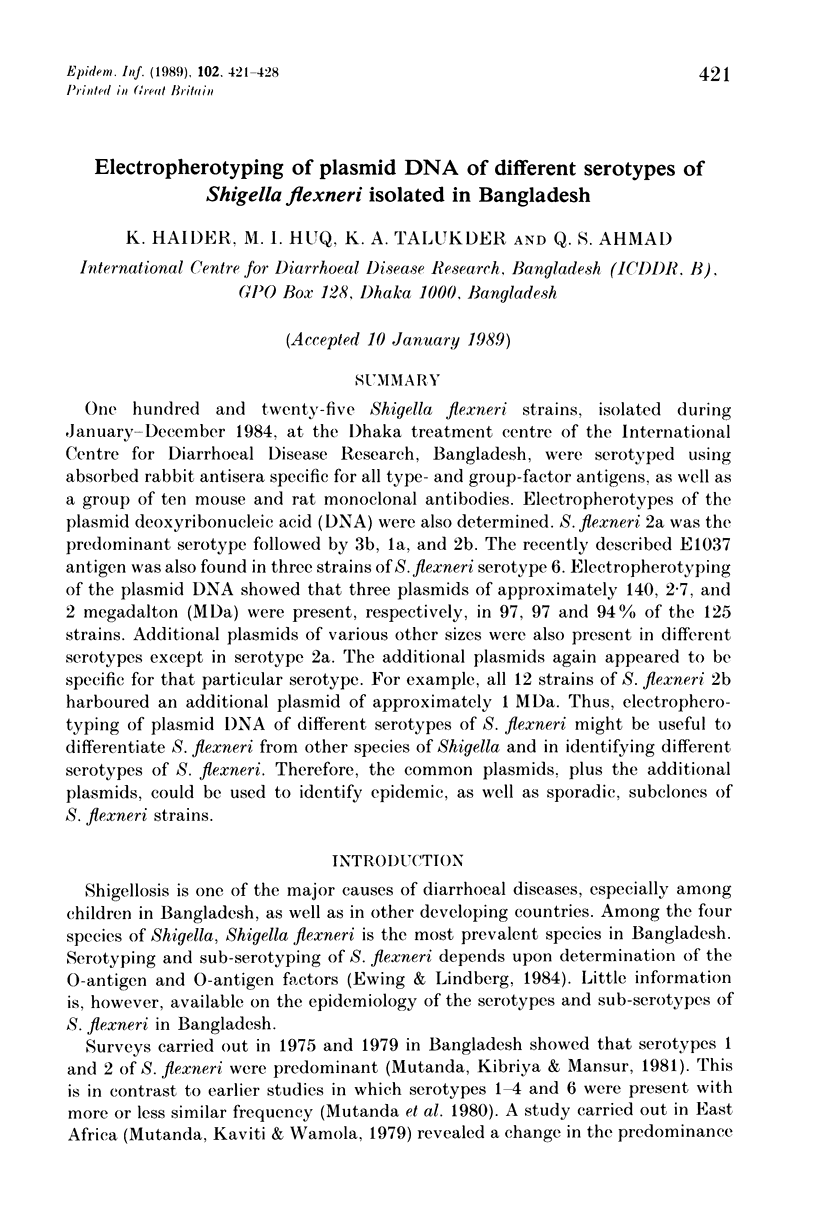
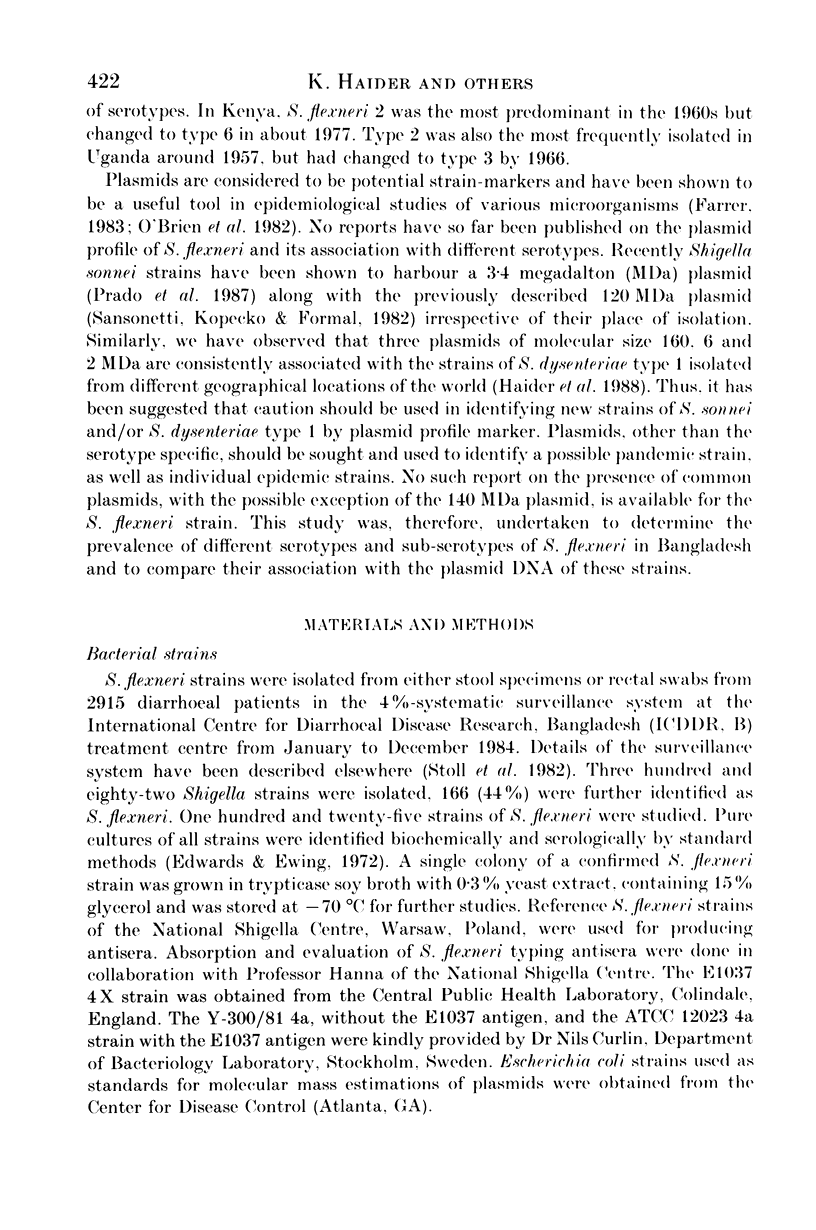
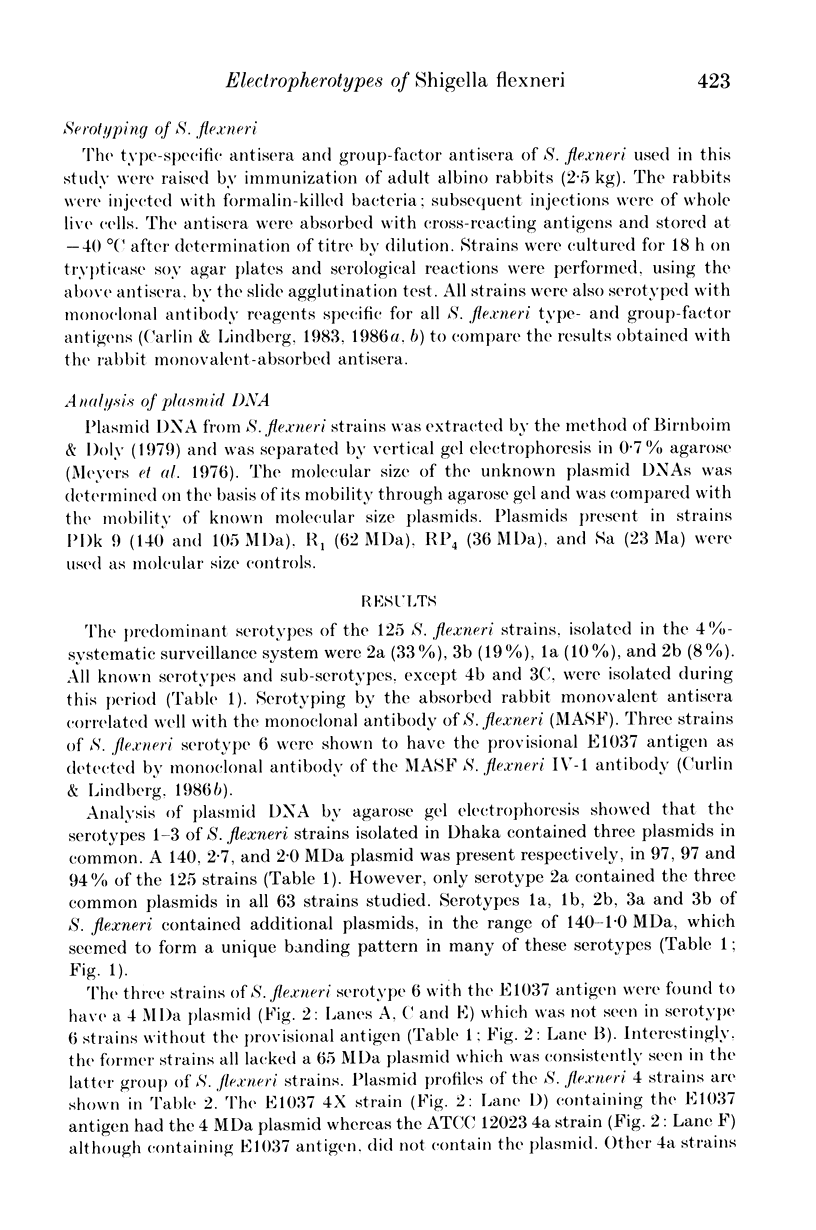
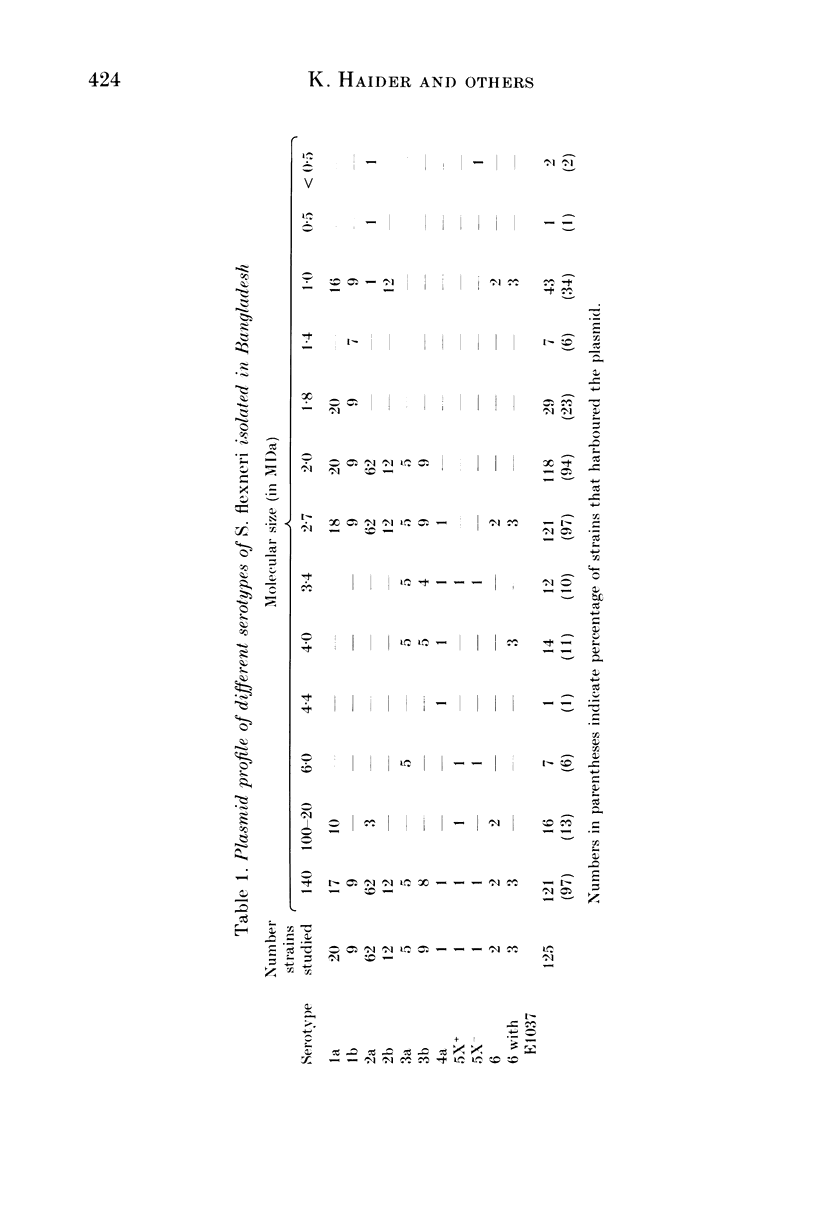
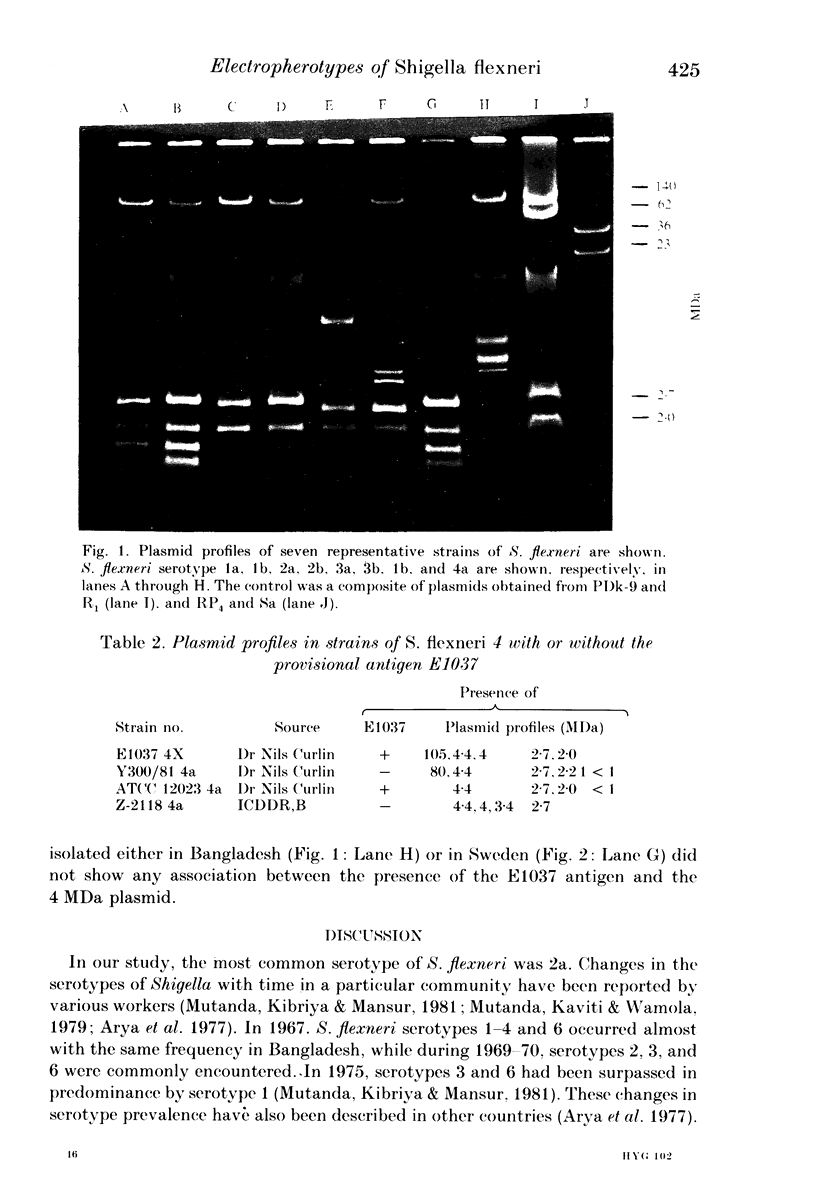
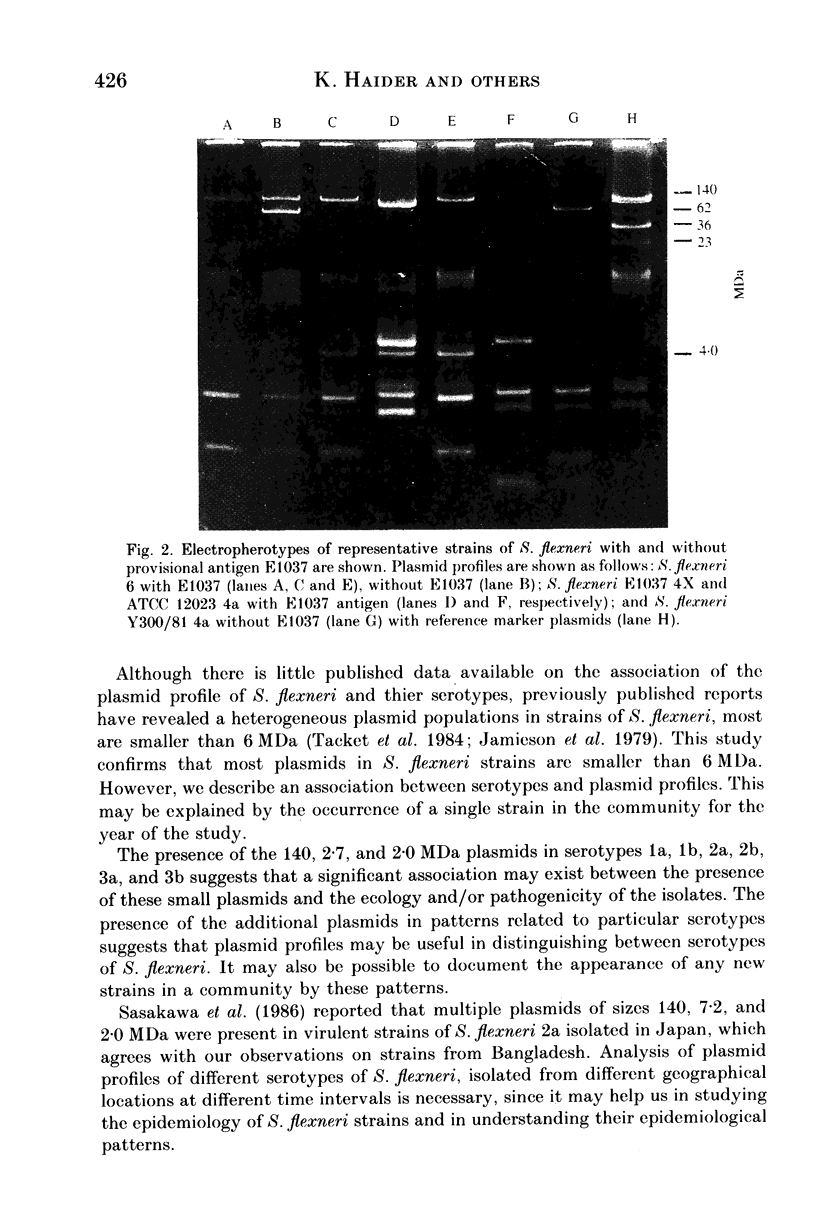
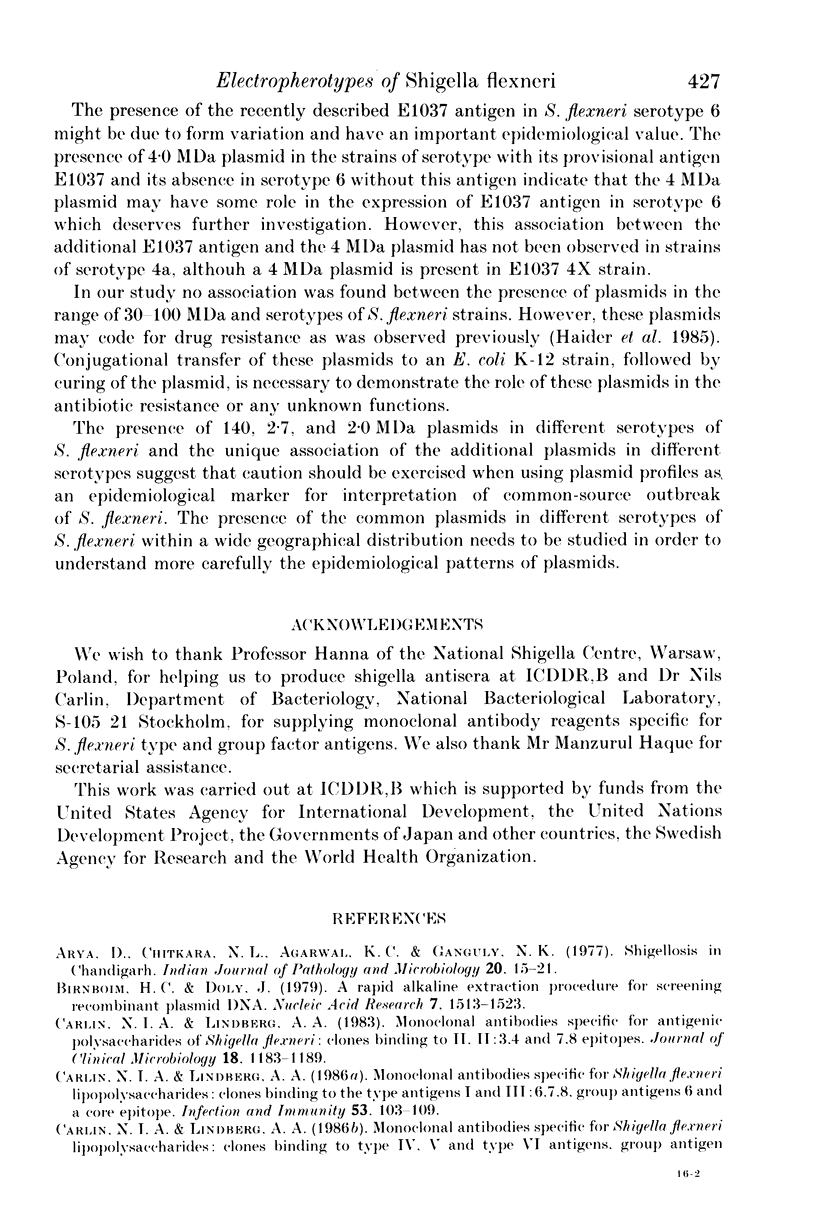
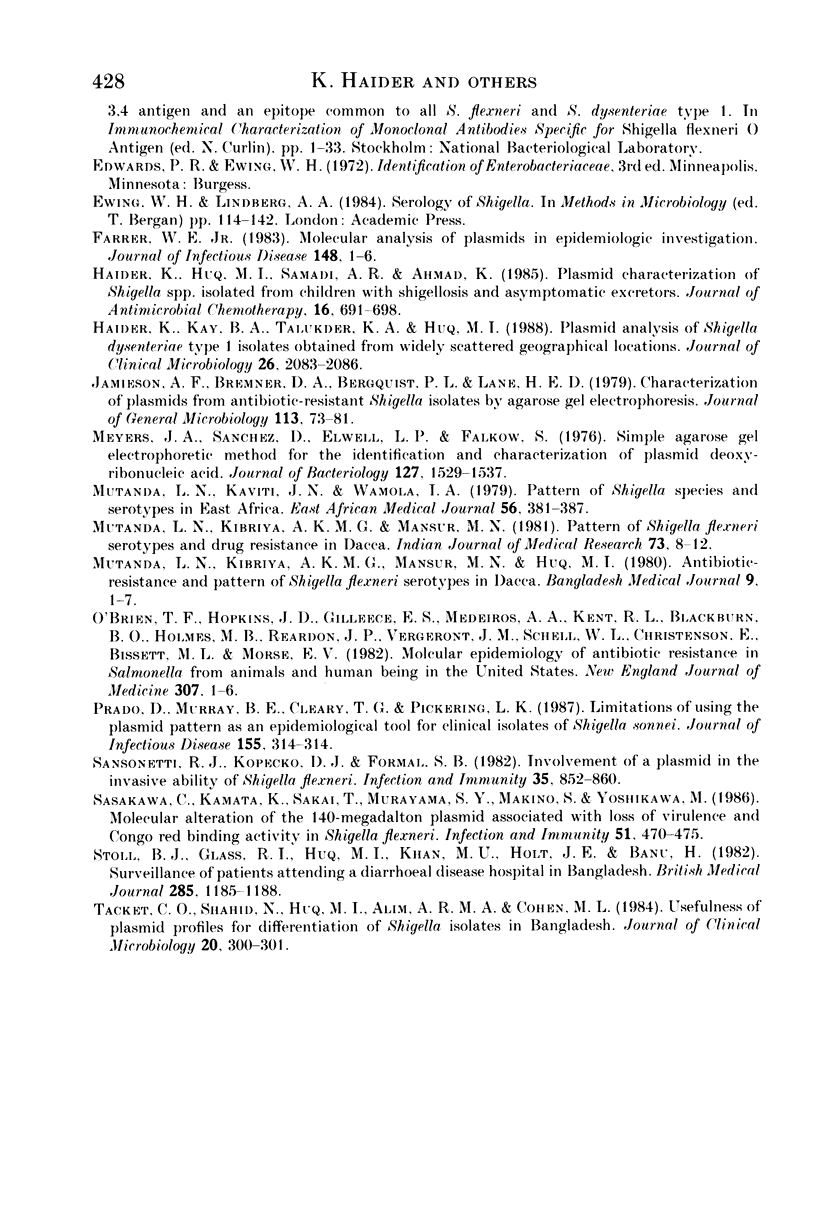
Images in this article
Selected References
These references are in PubMed. This may not be the complete list of references from this article.
- Arya D., Chitkara N. L., Agarwal K. C., Ganguly N. K. Shigellosis in Chandigarh. Indian J Pathol Microbiol. 1977 Jan;20(1):15–21. [PubMed] [Google Scholar]
- Carlin N. I., Lindberg A. A. Monoclonal antibodies specific for O-antigenic polysaccharides of Shigella flexneri: clones binding to II, II:3,4, and 7,8 epitopes. J Clin Microbiol. 1983 Nov;18(5):1183–1189. doi: 10.1128/jcm.18.5.1183-1189.1983. [DOI] [PMC free article] [PubMed] [Google Scholar]
- Carlin N. I., Lindberg A. A. Monoclonal antibodies specific for Shigella flexneri lipopolysaccharides: clones binding to type I and type III:6,7,8 antigens, group 6 antigen, and a core epitope. Infect Immun. 1986 Jul;53(1):103–109. doi: 10.1128/iai.53.1.103-109.1986. [DOI] [PMC free article] [PubMed] [Google Scholar]
- Haider K., Huq M. I., Samadi A. R., Ahmad K. Plasmid characterization of Shigella spp. isolated from children with shigellosis and asymptomatic excretors. J Antimicrob Chemother. 1985 Dec;16(6):691–698. doi: 10.1093/jac/16.6.691. [DOI] [PubMed] [Google Scholar]
- Haider K., Kay B. A., Talukder K. A., Huq M. I. Plasmid analysis of Shigella dysenteriae type 1 isolates obtained from widely scattered geographical locations. J Clin Microbiol. 1988 Oct;26(10):2083–2086. doi: 10.1128/jcm.26.10.2083-2086.1988. [DOI] [PMC free article] [PubMed] [Google Scholar]
- Jamieson A. F., Bremner D. A., Bergquist P. L., Lane H. E. Characterization of plasmids from antibiotic-resistant Shigella isolates by agarose gell electrophoresis. J Gen Microbiol. 1979 Jul;113(1):73–81. doi: 10.1099/00221287-113-1-73. [DOI] [PubMed] [Google Scholar]
- Meyers J. A., Sanchez D., Elwell L. P., Falkow S. Simple agarose gel electrophoretic method for the identification and characterization of plasmid deoxyribonucleic acid. J Bacteriol. 1976 Sep;127(3):1529–1537. doi: 10.1128/jb.127.3.1529-1537.1976. [DOI] [PMC free article] [PubMed] [Google Scholar]
- Mutanda L. N., Kaviti J. N., Wamola I. A. Patterns of shigella species and serotypes in East Africa. East Afr Med J. 1979 Aug;56(8):381–387. [PubMed] [Google Scholar]
- Mutanda L. N., Kibriya A. K., Mansur M. N. Pattern of Shigella flexneri serotypes and drug-resistance in Dacca. Indian J Med Res. 1981 Jan;73:8–12. [PubMed] [Google Scholar]
- Prado D., Murray B. E., Cleary T. G., Pickering L. K. Limitations of using the plasmid pattern as an epidemiological tool for clinical isolates of Shigella sonnei. J Infect Dis. 1987 Feb;155(2):314–316. doi: 10.1093/infdis/155.2.314. [DOI] [PubMed] [Google Scholar]
- Sansonetti P. J., Kopecko D. J., Formal S. B. Involvement of a plasmid in the invasive ability of Shigella flexneri. Infect Immun. 1982 Mar;35(3):852–860. doi: 10.1128/iai.35.3.852-860.1982. [DOI] [PMC free article] [PubMed] [Google Scholar]
- Sasakawa C., Kamata K., Sakai T., Murayama S. Y., Makino S., Yoshikawa M. Molecular alteration of the 140-megadalton plasmid associated with loss of virulence and Congo red binding activity in Shigella flexneri. Infect Immun. 1986 Feb;51(2):470–475. doi: 10.1128/iai.51.2.470-475.1986. [DOI] [PMC free article] [PubMed] [Google Scholar]
- Stoll B. J., Glass R. I., Huq M. I., Khan M. U., Holt J. E., Banu H. Surveillance of patients attending a diarrhoeal disease hospital in Bangladesh. Br Med J (Clin Res Ed) 1982 Oct 23;285(6349):1185–1188. doi: 10.1136/bmj.285.6349.1185. [DOI] [PMC free article] [PubMed] [Google Scholar]
- Tacket C. O., Shahid N., Huq M. I., Alim A. R., Cohen M. L. Usefulness of plasmid profiles for differentiation of Shigella isolates in Bangladesh. J Clin Microbiol. 1984 Aug;20(2):300–301. doi: 10.1128/jcm.20.2.300-301.1984. [DOI] [PMC free article] [PubMed] [Google Scholar]




